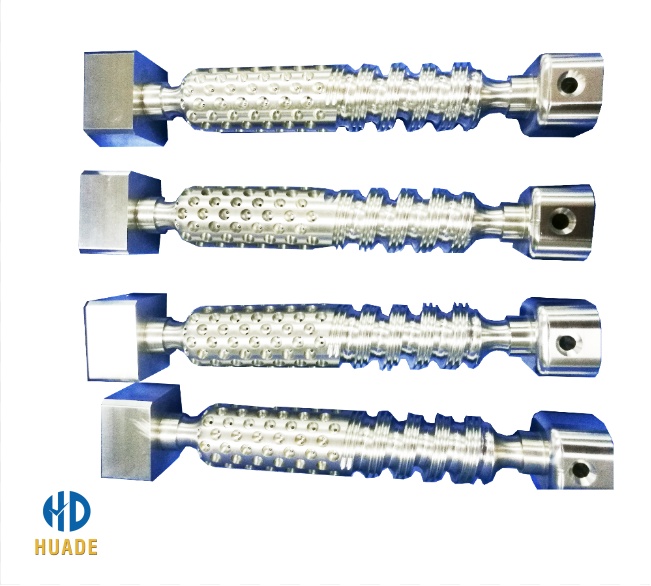When it comes to manufacturing parts, engineers and designers face a critical choice: what process is best for their specific needs? For many, the decision comes down to balancing cost, volume, and material properties. This guide delves into three key manufacturing methods—aluminum screw machining, low volume injection molding, and bending aluminum extrusions—providing an in-depth look at their applications, benefits, and when to use each for your next project.
Understanding Aluminum Screw Machining: Precision at its Core
aluminum machine screws is a subtractive manufacturing process that uses a CNC lathe to turn a solid aluminum rod into a finished part. This method is renowned for its incredible precision and ability to produce complex, high-tolerance components. From intricate screws and threaded rods to complex cylindrical parts, aluminum’s machinability makes it an ideal material for this process.
Why choose aluminum screw machining?
- High Precision and Tight Tolerances: This is the go-to method for parts requiring extremely precise dimensions and surface finishes. Think aerospace components, medical devices, and intricate electronic hardware.
- Superior Material Properties: Machining retains the material’s strength and integrity, which is crucial for structural or load-bearing parts.
- Ideal for Low to Medium Volumes: While it can be more expensive per part than other methods at high volumes, it’s highly cost-effective for prototyping, small batch runs, and custom parts where tooling costs for molding would be prohibitive.
This process is a cornerstone of modern manufacturing, delivering quality and reliability that are hard to match. When your design demands uncompromising accuracy and material performance, aluminum machine screws is often the optimal choice.

An Engineer’s Guide to Low-Volume Injection Molding
While machining is perfect for precision, what about producing a few hundred or a few thousand identical plastic parts? This is where low volume plastic injection molding comes in. Unlike traditional injection molding, which requires expensive steel molds, low-volume runs often use more affordable tooling materials like aluminum or even 3D-printed molds. This makes it a viable option for prototyping, market testing, or producing limited-edition products without a massive initial investment.
Key advantages of low volume injection molding:
- Scalable Production: You can quickly ramp up from a few dozen parts to several thousand once the mold is created.
- Design Flexibility: The process can produce complex geometries and internal features that would be difficult or impossible with machining.
- Wide Material Selection: A vast range of thermoplastic and thermoset resins are available, each with unique properties (e.g., strength, flexibility, chemical resistance).
The decision to use this process hinges on volume and material. If your part is plastic and you need a moderate quantity, low volume plastic injection molding provides an excellent balance of cost and efficiency.
Bending Aluminum Extrusions: Shaping a New Path
For long, structural components, neither machining nor molding is the primary solution. This is where bending aluminum extrusions becomes essential. Aluminum extrusions are created by pushing an aluminum billet through a die, forming a uniform cross-sectional shape. This process is incredibly versatile and cost-effective for producing long, lightweight components like window frames, heat sinks, and structural members.
Why is bending aluminum extrusions so valuable?
- Cost-Effectiveness: Extrusion is one of the most efficient ways to create complex cross-sections, and bending allows for the creation of non-linear shapes from these stock profiles.
- High Strength-to-Weight Ratio: Aluminum is naturally light and strong, making bent extrusions perfect for applications where weight is a factor, such as in the automotive and aerospace industries.
- Seamless Integration: Bending can create seamless curves, which can enhance both the aesthetics and structural integrity of a component.
This method complements aluminum machine screws by addressing the needs for larger, custom-shaped structural parts that don’t require the same level of precision as machined components but still need to be perfectly formed.
Choosing the Right Process for Your Project
Ultimately, the best manufacturing process depends on your specific needs. Aluminum screw machining is the champion of precision and material integrity, ideal for high-performance, complex parts. Low volume injection molding is the agile solution for plastic parts and smaller production runs, offering flexibility and affordability. Finally, bending aluminum extrusions excels at creating long, structural components with a focus on efficiency and strength.
Understanding these different processes is key to making informed decisions that save time and money while ensuring your product meets its design and performance goals. At Dongguan Huade Precision Manufacturing Co., Ltd., we specialize in a range of advanced CNC machining services, including a deep expertise in aluminum screw machining and other related processes, helping our clients select the perfect manufacturing path for their unique challenges.
If you are looking for a reliable CNC machining partner to help you realize the design and production of precision parts, welcome to visit our official website www.hdproto.com or contact our professional team directly.
